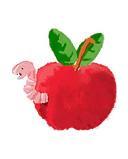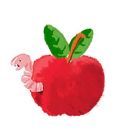Cognition
How COVID-19 Widened the Language Gap
The effects of lockdown on children's language development.
Posted October 30, 2023 Reviewed by Michelle Quirk
Key points
- The COVID-19 pandemic has lasting negative influence on children's language and communication skills.
- This influence may exacerbate existing inequalities between children.
- Recent research found new pathways to support the language development of the most vulnerable children.

By Anna Brown
The COVID-19 pandemic and the measures put in place to control it had a significant impact on all our lives. This impact continues to be felt by families who raised children during the pandemic without access to their friends, families, and professional services.
In 2020, in England and Wales, 613,936 children were born, and for most of that year, we lived with restrictive public health measures. These "pandemic babies" missed many of the activities that are important to their socialisation. Families had reduced access to services designed to support their child’s development, such as children's centres and important health care services. Only 1 in 10 parents with children under 2 years saw a health visitor during the pandemic.
Babies and infants are resilient. Generally, they have overcome most of the pandemic’s challenges to their early life experiences, except for in one domain: language.
In a report from 2022, two years after the start of the pandemic, 95 percent of health visitors reported that the pandemic was having an ongoing negative impact on children’s communication, speech, and language skills. Indeed, children born in the first three months of the pandemic met fewer communication developmental milestones compared to those born pre-pandemic. When these children were 1 year old, only 77 percent could express one definite and meaningful word, compared to 98 percent of pre-pandemic babies. Similar differences were observed for other important language milestones such as pointing and waving goodbye.
These findings are concerning. Being able to communicate and understand language effectively is vital for success in education, and the critical period for developing these skills is before school age, leaving some entering education unable to access the curriculum, develop literacy skills, and even connect with their peers. This makes it hard for them to catch up, resulting in a "language gap."
What Is the "Language Gap"?
The so-called "language gap" was already known before the pandemic and occurs between children from wealthier families and those from under-resourced backgrounds.
The language gap is evident from 18 months of age and persists across development. By five years old, 75 percent of children with persistent experiences of poverty score below average in vocabulary tests compared with only 35 percent of those with no experience of poverty.
Families with higher incomes have the economic and social resources to provide rich learning opportunities for their children. Families with limited income need to focus on essential needs like food and bills, whilst things like laptops and extra educational activities are less affordable. These differences in the early life environments that families can provide are likely to affect language development and consequently create a language gap.
The pandemic is likely to have further widened this inequality, as the financial challenges that families faced grew. Some dealt with increased financial insecurity due to the loss of jobs, which disproportionately affected those in low-income occupations. Other families who kept their jobs had to balance work pressures with the closure of childcare facilities and professional services. These situations caused increased stress and negatively impacted mental health, which, in turn, contributed to creating unequal childhood experiences.
These additional financial, childcare, and mental health challenges affected the children’s home learning environment. For example, families who were among the 20 percent of top earners prior to the pandemic spent an average of 5.8 hours per week on educational activities during the pandemic compared to 4.5 hours in the 20 percent of lowest-income families. At the time the report was published, it was predicted that by September 2020 this would mean high-income earners spent an additional 15 days on educational activities. As the pandemic persisted and further health measures were necessary, 15 days is likely an underestimate.

There’s Light at the End of the Tunnel!
The pandemic had a lasting, negative impact on children’s language development. But the light at the end of the tunnel is that language environments are a malleable experience and, therefore, interventions can be put in place.
An example of an effective intervention is The Nuffield Early Language Intervention—in short, NELI. Designed for children in nursery and reception who show delayed language development, NELI is delivered by teaching assistants over 30 weeks through group and one-on-one sessions, targeting the development of all language skills including children’s vocabulary, listening, and narrative skills.
A recent large-scale randomised controlled trial that included 1,593 pupils across 193 schools found that children who took part in the intervention advanced their overall language ability by 3 months compared to those who didn’t take part in the intervention. Advancing language skills, even by 3 months, was enough for children who took part in the intervention to go on to develop advanced reading skills compared to those who did not.
How much the COVID-19 pandemic has widened the language gap remains unknown. Until these "pandemic babies" enter education, we may not fully understand the extent of the problem. Fortunately, there are language interventions to support development that can be implemented to address this gap. These interventions will provide children with the language skills needed to give them the best chance at succeeding in education.




